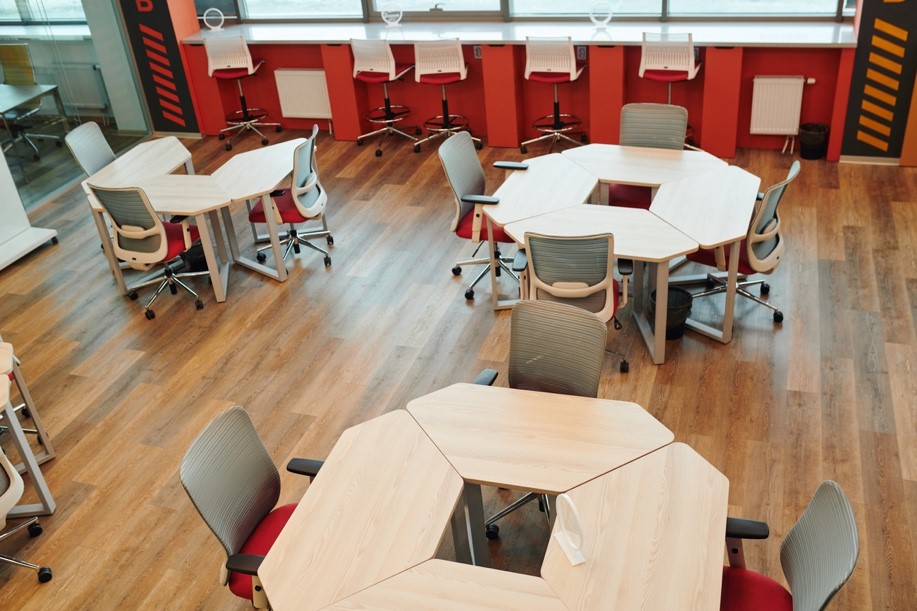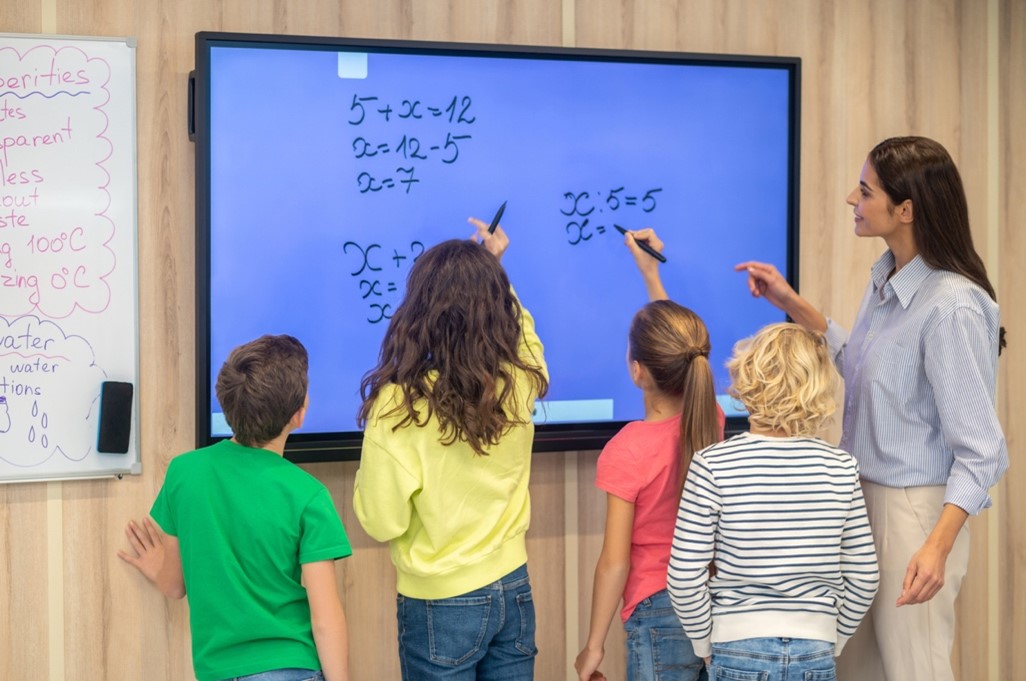The rapid advancement of technology and a deeper understanding of how students learn are fundamentally reshaping educational environments. The digital learning spaces of the future must go beyond simply digitizing traditional classrooms—they must be intentionally designed to foster engagement, personalization, collaboration, and lifelong learning.
Here’s how educators, architects, and technologists can approach the design of these transformative spaces.
Core Principles of Future-Ready Digital Learning Spaces
1) Technology Integration
At the heart of digital learning spaces is the seamless integration of advanced technologies. Interactive smartboards, AI-driven learning platforms, cloud-based management systems, and IoT devices (Internet of Things) are becoming standard features. These tools not only deliver content but also enable real-time feedback, digital assessments, and personalized learning pathways, ensuring that every student receives support tailored to their progress and abilities.

2) Flexibility and Modularity
Modern learning is dynamic. This fuels demand for spaces that can adapt to various teaching and learning styles. Modular furniture, movable partitions, and adaptable layouts allow classrooms to shift seamlessly between lectures, group work, hands-on activities, and individual study. This flexibility supports both in-person and hybrid learning models, making education more inclusive and responsive to student needs.

3) Personalization Through AI
Artificial intelligence is revolutionizing education by enabling adaptive learning systems. These platforms analyze student performance in real time, adjusting content difficulty and pacing to individual needs. AI-driven tutoring systems and predictive analytics help educators identify learning gaps and intervene early, making personalized education scalable even in large classrooms.
4) Immersive and Experiential Learning
Virtual and augmented reality (VR/AR) technologies are opening new frontiers in experiential learning. Students can participate in virtual field trips, simulated science labs, or interactive language practice with virtual personas, making learning more engaging and memorable. These immersive experiences help bridge the gap between theoretical knowledge and real-world application.
5) Collaboration and Communication
Digital learning spaces are designed to foster collaboration, both in-person and remotely. Digital whiteboards, collaborative apps, and cloud platforms enable students to work together on projects, share resources, and receive instant feedback from teachers. This collaborative infrastructure is essential for developing teamwork and communication skills vital for future careers.
Key Technologies Shaping Digital Learning Spaces
| Interactive Smartboards | Enable multimedia lessons, drawing, and real-time interaction |
| AI-Driven Platforms | Personalize learning, provide analytics, automate feedback |
| VR/AR | Create immersive, experiential learning environments |
| Cloud-Based Systems | Offer anytime, anywhere access to resources and assignments |
| IoT Devices | Optimize classroom comfort (lighting, temperature), automate management |
Addressing Challenges in Implementation
Despite the promise of digital learning spaces, several challenges must be addressed:
- Financial Investment:Upgrading or building new spaces with advanced technology can be costly. Strategic planning and phased implementation can help manage budgets.
- Educator Training:Teachers need professional development to effectively use new tools and adapt to student-centered pedagogies. Ongoing support and training are critical for successful adoption.
- Equity and Accessibility:Ensuring all students have access to devices, high-speed internet, and assistive technologies is essential for inclusive education.
- Data Privacy and Ethics:As AI and analytics become more prevalent, safeguarding student data and addressing algorithmic bias are paramount concerns
Best Practices for Designing Digital Learning Spaces
- Engage Stakeholders: Involve teachers, students, parents, and IT professionals in the design process to ensure spaces meet actual needs.
- Prioritize Adaptability: Choose furniture and technology that can evolve with changing pedagogical approaches and technological advancements.
- Foster a Culture of Innovation:Encourage experimentation with new teaching methods and technologies, and share best practices within and between institutions. Encourage openness and solicit feedback.
- Measure and Iterate:Use data and feedback to continually refine learning environments, ensuring they deliver improved educational outcomes.
The Transformative Impact
Well-designed digital learning environments do more than deliver content—they empower students to take charge of their learning journey. By supporting diverse learning styles, enabling personalized pathways, and fostering collaboration, these spaces prepare students for the complexities of the modern world. They also support lifelong learning, critical thinking, and innovation, which are essential for success in a rapidly changing society.
As technology continues to evolve, the most successful digital learning spaces will be those that remain flexible, inclusive, and centered on the needs of learners. By embracing these principles, educators and designers can create environments that not only keep pace with the future but help shape it.

Leslie Stebbins is the director of Research4Ed. She has more than twenty-five years of experience in higher education and K-12 learning and instructional design. She has an M.Ed. from the Technology Innovation & Education Program at the Harvard Graduate School of Education and a Master’s in Library and Information Science from Simmons College. Program








